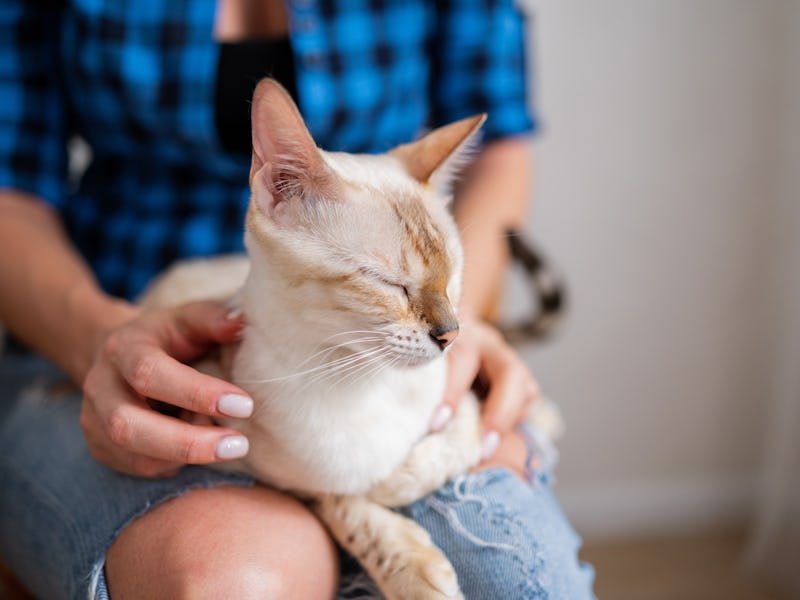Why Does My Cat Sleep On Me? It’s Not Only for Warmth
This practical behavior has a social component, too.

There’s a rule of thumb in many a cat home: If your cat is sleeping on you, you’re not allowed to move a muscle.
This adorable, if sometimes inconvenient, experience has been the source of countless excuses for bailing on everything from social plans to work. Mikel Delgado, a cat behavior consultant in Sacramento, unravels why our cats are actually doing this.
Why does my cat sit on me?
At the most basic level, Delgado tells Inverse, cats like warm spots, and we’re a source of warmth. A cat’s thermoneutral zone, or the ambient temperature that maintains constant body heat in an animal, is about 85 degrees Fahrenheit, whereas a human’s is between 68 and 72 degrees. Humans sweat and shiver, plus our clothes retain heat. Cats, even with their fur coats, seek out warmth from sunspots, heaters, laptops, and laps to keep toasty.
“I don't want to make it sound like cats are just using us for body heat,” she tells Inverse. “But that's definitely a big motivator.”
What does it mean when my cat sits in my lap?
This practical behavior has a social component, too. Cats who enjoy each other’s company may practice what Delgado calls “pillowing” or huddling close up against each other. When a kitty crawls into your lap, it’s including you in its social group.
This behavior could come from how it spends its very first days. For the first three weeks of their lives, kittens also can’t regulate their body temperature. “They are completely reliant on mom and their littermates to keep them warm,” Delgado says. They might bring that behavior into their life as an adult, or they may find they prefer solitude without cuddling.
Delgado says between two and seven weeks of age is a crucial window for learning to socialize with multiple new people.
“Kittens that are handled by a lot of different people and have positive experiences during that time period are more likely to be comfortable with lots of different people,” Delgado says, “as opposed to a kitten who's maybe only handled by one person.” This developmental stage may influence how cuddly a cat is in general, including whether they become a lap cat.
Can I train my cat to sit on my lap?
Sometimes, you just have to love the cat you’ve got. Delgado urges cat owners to respect their pet’s wishes if they immediately jump to the floor or struggle when you try to hold them in your lap. If you work too hard to restrain them, that could backfire and result in a scratch.
She says it’s possible to use treats to train them to jump onto your lap and stay there, but it’s not guaranteed. Layering a blanket on your lap could make it a more enticing option, but ultimately it comes down to the individual cat.
There is, however, an art to standing up with a cat in your lap.
“Make that transition as gentle as possible,” Delgado advises. Try touching them someplace they’re usually okay with as a signal to rouse them. Stand up slowly so they have plenty of time to jump down. Suddenly removing a nice warm lap might agitate them. They likely wouldn’t injure themselves, but a rude awakening won’t make them feel great.
Cats show affection in many other ways, including with slow blinks and even sitting with their back to you, so it’s important to see how your cat shows its love even if it’s not snoozing in your lap.